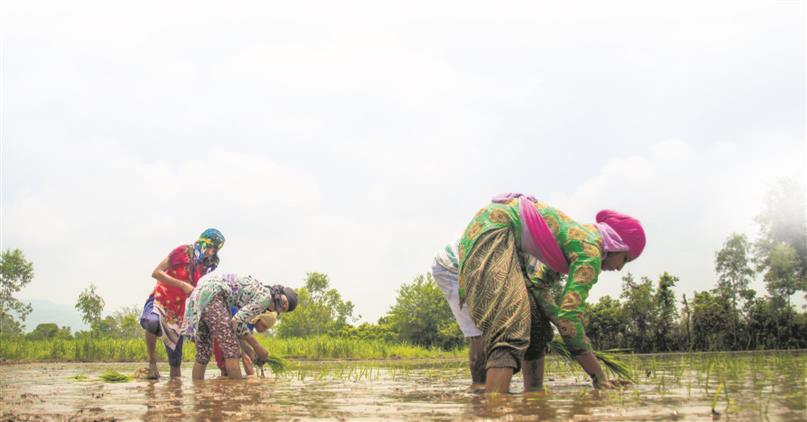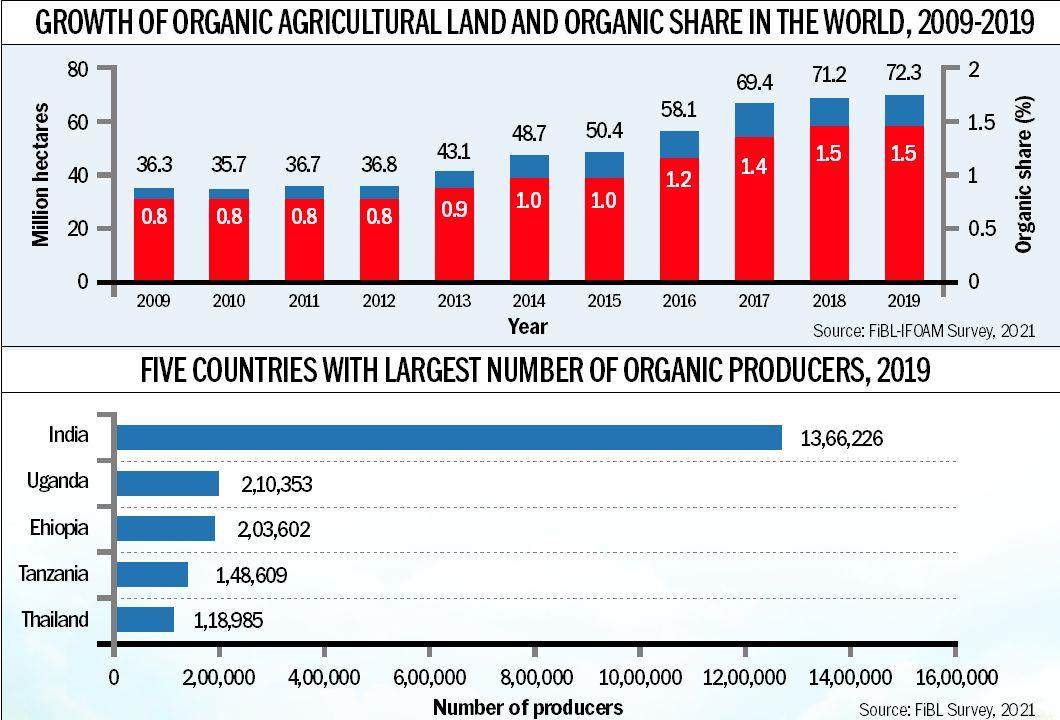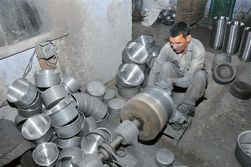
Bishwa Bhaskar Choudhary and Amaresh Chandra
FOOD security and safety, in the light of rapidly growing population, resource scarcity and environmental externalities, are perhaps the two definitive challenges for us to combat in the near future. Conventional agriculture, which is often seen as a natural outcome of the Green Revolution, despite having evident merits of meeting food security needs over the years is under frequent scrutiny as its cost to human, animal and environmental health are apparent. It necessitated an alternative production system that is profitable and attuned to diverse needs.

After years of being ridiculed, organic farming is now on the policy radar of governments across the globe. Intellectuals are urging farmers to jump off the chemical bandwagon. Growing research evidence on inevitable climate change and its potential impact on agriculture also provide strong rationale for an increasing focus on sustainable production model. As per the research report of Netherlands-based University of Twente, organic agriculture has a positive impact on no less than eight of the 17 Sustainable Development Goals (SDGs), including Zero Hunger, Good Health and Wellbeing, Clean Water and Sanitation, Decent Work and Economic Growth, Responsible Consumption and Production, Climate Action, Life Below Water and Life on Land.
In a recent publication of FiBL (Research Institute of Organic Agriculture) and IFOAM-Organic Internationals, in 2019 a total of 187 countries were reported to be involved in organic activities. Compared to 2009, organic agricultural land in the world has doubled from 36.3 million hectares (mha) to 72.3 mha in 2019 and the share of organic land to total agricultural land increased from 0.8% to 1.5% during this period. Apart from land dedicated to organic farming, a considerable area of around 35 mha of organic land across the globe is under other activities like wild collection (apiculture, forest honey, wild medicinal and aromatic plants etc.), aquaculture, forests and grazing areas.
India, with around 2.3 mha (around 1.3 % of total agricultural land) under organic cultivation, is at a nascent stage, yet the country still ranks fifth on the global list of organic agricultural land after Australia (35.69 mha), Argentina (3.67 mha), Spain (2.35 mha) and the USA (2.33 mha). Interestingly, India added 3.6 lakh hectares (around 18.6% increase) — highest in the world — under organic farming between 2018 and 2019. Besides, out of 3.1 million reported organic producers globally, around 51% are in Asia; India, with over 13 lakh organic producers, tops the countries’ list. These statistics reveals India’s strong growth potential to emerge as a global leader in meeting the SDGs by 2030. The decision to focus on farmers’ lands in 5-km-wide corridors along the Ganga (Union Budget 2022-23) reiterates India’s thrust on healthy agro-ecosystems.
Consumers’ concerns
Owing to growing health and environmental concerns among the people, consumers are keen on safer foods produced authentically by local systems. Organic products have become a part of the go-green lifestyle and are ranked higher among consumers’ choices compared to their conventional counterparts. The Covid-19 pandemic has also triggered the demand for organic foods due to their perceived benefits in boosting immunity; however, the studies on nutritional superiority of organic products over conventionally grown food are still inconclusive.
Marketing prospects
According to the Expert Market Research report, the global organic food market was worth $167.85 billion in 2020. The single largest market is the US, followed by Germany, France and China. Regionally, North America is the leading market, followed by Europe and Asia. Though the Indian organic food industry scene may appear less encouraging with estimates around $1,023 million now, it is forecast to grow at a CAGR of 20.5% during 2022-2027, driven by renewed demand for healthy and immunity-building foods after the pandemic. The exports of organic products from India are valued at over $1.0 billion, but we can expect a jump due to the country’s high potential, assisted by the food industry transitions in the post-Covid world.
The way forward
Sri Lanka’s leap into a fully organic food-producing paradise is a cautionary tale for developing nations. When the food security of a country is at stake, it is naive to stick to the binary choice of organic or conventional agriculture. The Sri Lankan crisis, though, does not offer sufficient justification to discourage organic farming in India as the country has a sufficient buffer to face such challenges. However, a change in the agricultural production system of a country of more than a billion people must be a well-researched and thought-out process.
Organic farming in India has just begun taking baby steps. The key to success lies not only in a bold decision to turn organic, but to address underlying bottlenecks which include lack of appropriate infrastructure, shortage of compost, organic fertilisers, biopesticides and allied inputs, and high input cost of farming. Considerable studies show the trade-offs in productivity and efficiency parameters that accompany the adoption of organic farming. Cost of organic certification accentuates prices of the products, making them out of reach for lower-income families and therefore often attract criticism for being elitist. Therefore, such systems often demand price support to make production economically viable for farmers.
We must rethink policies supporting exports of our organic products and also spread knowledge among the farmers regarding scientific and management approaches for quality organic produce. This would help to shape organic farming, meet the global climate targets and conserve natural ecosystems.
Choudhary is a scientist at ICAR Indian Grassland & Fodder Research Institute, Jhansi; Chandra is Director of the institute. Views are personal
Join Whatsapp Channel of The Tribune for latest updates.



























